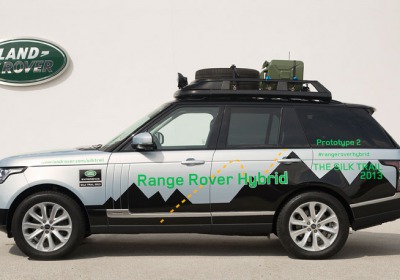Range Rover Hybrid and Range Rover Sport Hybrid (2013) at Frankfurt motor show
Wed, 21 Aug 2013
Land Rover is entering a new hybrid era with two new part-electric models: the Range Rover Hybrid and Range Rover Sport Hybrid. Both cars use an identical diesel-electric drivetrain, post identical economy and CO2 claims, and should offer comparable performance to their V8 sisters. Too good to be true? Read on the for complete tech spec.
What engine do the Range Rover Hybrids use?As CAR reported in our comprehensive spy shots story earlier in 2013, the Range Rover Hybrid and Range Rover Sport Hybrid use the 258bhp 3.0-litre V6 turbodiesel engine already found in ‘entry-level’ version of the new Rangie.
What does the Hybrid model add?The Range Rover Hybrids use a 47bhp electric motor integrated directly into the eight-speed ZF automatic gearbox – a set-up that saves weight and reduces friction. The motor develops a healthy maximum of 125lb ft of torque from its first rotation. The peak torque figure of the hybrid driveline is actually 516lb ft – the same as a Porsche Cayenne Turbo’s output, and 192lb ft more than Porsche’s own petrol-electric Cayenne S Hybrid.
Sounds pretty powerful for an eco-model…It is. With 516lb ft on tap from 1500rpm and a combined power output of 335bhp, the Range Rover Hybrid and Range Rover Sport Hybrid both hit 62mph in less than 7.0sec, and top out at 135mph.
What about the economy figures?Both hybrid Rangies score 44.1mpg, easily outperforming the regular turbodiesel’s 37.7mpg combined cycle figure, while also delivering a 26% reduction in CO2 emissions, down 27g to 169g/km. The cars’ electric motors are also capable of powering them on battery power alone at up to 30mph, but only for one mile. The motor also acts as a generator when coasting to recharge the batteries.
No doubt those batteries take up a lot of space and add weight?Land Rover claims the entire hybrid system adds 120kg to the respective weight of each car: the Range Sport Hybrid is 2372kg and the Range Rover Hybrid is 2394kg.
The batteries have been cleverly packaged to prevent them intruding into the cabin in the event of a collision. Mounted in a reinforced boron steel cradle under the cars’ floors, the cells are water-cooled, improving their ability to retain charge in high ambient temperatures. Slinging the batteries underneath the car enables a low centre of gravity, while impressively, both cars retain their cargo space and regular seating configurations – with seven seats in the Range Rover Sport still an option.
When can I buy one?Order books open on 10 September 2013, and you’ll be able to check out your potential purchase at the 2013 Frankfurt motor show. First deliveries will commence in early 2014, with prices expected to be on a par with the supercharged petrol V8 models, at around £82,000 for the Range Rover Sport Hybrid and £100,000 for a Range Rover Hybrid.
By Ollie Kew

